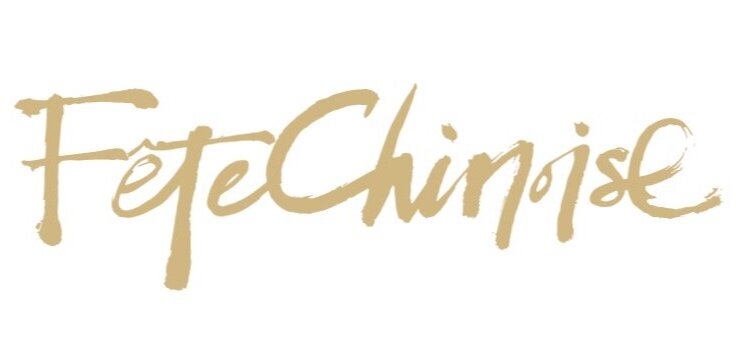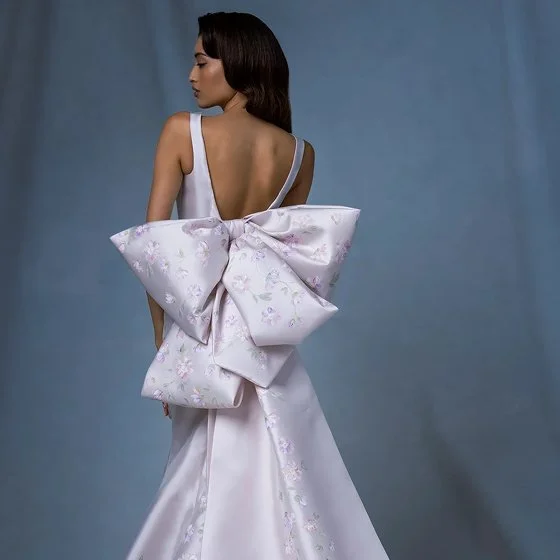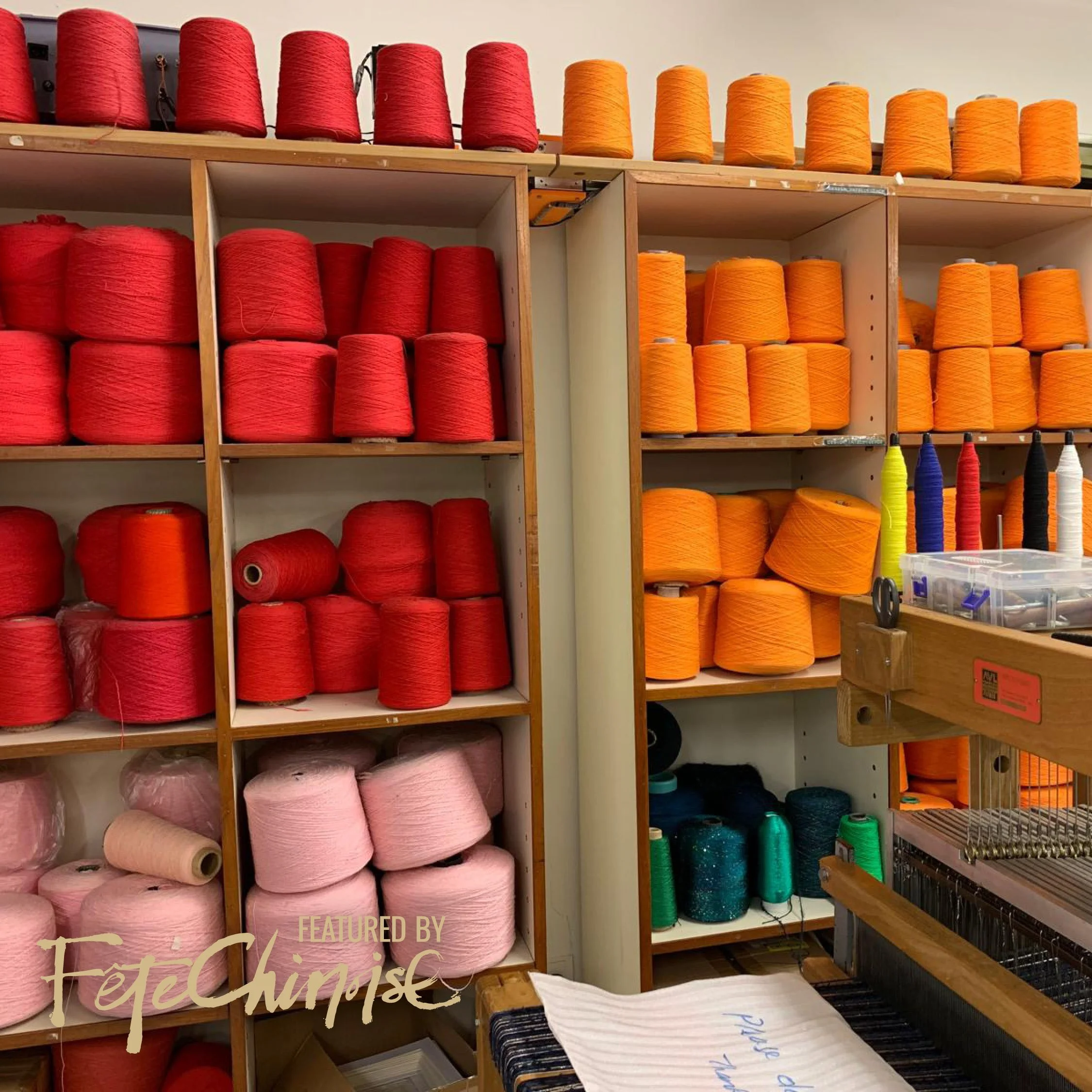A Cultural Children’s Book Becomes New York Times Best Seller: Joanna Ho’s “Eyes that Kiss in the Corners”
Written & Interviewed by Cindy Tu, The Fête Chinoise Team
BooK COVER of “EYES THAT KISS IN THE CORNERS”. Photo credit Michele Sterling.
WRITER Joanna Ho. Photo credit Katie Heiner Photography.
Inside, the most memorable line in the story is Ho’s words, "I have eyes that kiss in the corners and glow like warm tea." This simple and romanticized sentence beautifies Asian-shaped eyes, which is a facial feature often made fun of in racist slant-eyed remarks. This new and profound description of Asian eyes triggered a wave of deep emotions for Asian adults across North America and sparked critical thoughts. After reading the book meant for children, an Asian adult might share the collective revelation that the lack of self-love and quiet self-doubt linked to our physical features has resulted from racism. But these features should be recast as precious traits our ancestors gifted us, not to be ashamed of, and something to be proud of and embraced like the little girl in the book. Upon recognizing the pain and internalized damage, many adult readers have been inspired to actively prevent the new generation from experiencing the same suffering.
“I have eyes that kiss in the corners and glow like warm tea.”
Fête Chinoise is so grateful for author Joanna Ho’s time in accepting an interview with us. Ho shares her sentiment behind the book, thought-provoking views on representation in North America, and interestingly, her two cents why she thinks her book was not released in a timely manner. In this discussion, you will soon discover Ho’s approach to teaching children how to see themselves through storytelling. As well, the significance for all adults today is to create space in the North American narrative, so that the children can own their future and feel empowered to see and build their own ‘kingdoms’.
BOOK “EyeS THAT KISs IN THE CORNERS”. Photo credit Michele Sterling.
[Fête CHINOISE] With so many book genres to pick, why did you choose to write a book on diversity and representation?
[Ho] Starting out, I've always had a strong passion for racial equity and fighting for racial justice. I am an educator and vice-principal by profession in an area with marginalized populations, where the school system is often oppressive and unjust. By becoming an educator in this area, I have the opportunity to sort of 'disrupt' and change the system.
With my writing, it very much followed the same passion. I was an English teacher for a few years. As part of the work, I tried to introduce more inclusive literature to my students to help them see themselves and see others in the text.
When I had my first child back in 2015, I tried to purchase inclusivity-themed books and quickly found out that there were so few books with kids of colour. At that moment, I can only describe it as a very spiritual-like impression that "you should write a book." I love reading, I love language, and I love books. Why not?
I feel lucky that I am someone who has a really clear passion and drive. So, everything that I do stems from that desire to educate and fight for racial equity.
BOOK “EyeS THAT KISs IN THE CORNERS”. Photo credit Michele Sterling.
[Fête Chinoise] Do you feel that your book was a timely release with 'representation' being a pressing topic this year?
[Ho] It would have been more timely for us when we were younger. I have seen and continue to receive so many messages: they wish they had this book when they were young, or some would buy this book for themselves and don't even have children.
This really has shown me how pervasive, how damaging, and how widespread this very narrow Western-centred definition of beauty is. We have generations of people that internalized this negativity and have been really harmed.
[Fête Chinoise] There were many symbolic Chinese images illustrated in this picture book, i.e. fai chun (greeting decorations), peonies, Guanyin & Monkey King, etc. Why did your team decide to have so many traditional elements?
[Ho] Often, a non-Asian person would think Chinese culture only includes dragons, red envelopes or something-of-the-like. Our editor would challenge that it was too cliche or expected. And so, our illustrator brought in the imagery you see now that's filled with symbolism and references to legendary stories. There are often pages where I discover something new and don't know the tale of the imagery and would have my step father share the whole story. Still, there are details in the book that have symbolism that I was unaware of. For instance, my friend from China looked at the birds on one of the pages and shared how those are swallow birds. When they build a nest on someone's home, it has various symbolic meanings around family - one being that you have a really happy family.
BOOK “EyeS THAT KISs IN THE CORNERS”. Photo credit CHALKACADemy.com.
[Fête Chinoise] The heart of your story was so eloquently written. What is the key takeaway and hope you want for the new generation of Asians? And parents of this new generation?
[Ho] I'm not sure if I know exactly the answer, but a lot of the time, Eyes that Kiss at the Corners has been categorized as a book of self-love and affirmation. It's absolutely intended to be those things, but for me, quite frankly, it is also like a call-to-action. I hope this book will empower young people to truly be a 'revolution' as the book reads.
There's an intentional reference to 'ballgowns' at the beginning of the book and is related to the predominantly white-Disney princesses that wear ball gowns. That's a deliberate reference because this is an example of the subtle way that white-centric beauty standards are continually communicated to children and then often internalized. For me, this book is telling kids that when you recognize your own beauty in the face of that kind of pervasive messaging —that exists not just today, but all throughout history with a very clear oppressive purpose— it is an act of resistance and revolution. When you can see that, then you've really come to know your own power. And hopefully, you can use that power to build your 'kingdoms' in the clouds, as illustrated in the book, and not other people's kingdoms. Or you can imagine your own future and that you don't need those kingdoms.
For the parents, as a community, we should come together and be more united and more vocal about our own social justice causes, but also in all causes. Because they're all related in some way for our future children. We need to step up and recognize the power that we have to create change because no one will just give it to us, so we have to step into it, stop holding back and take care of our own.
[Fête Chinoise] How would you like to see the Asian narrative be shared in North America?
[Ho] I think that the Asian narrative has been so erased and so invisible. It is almost like the simple act of stepping in and just saying, "Hi, I exist."
“We have to remind ourselves that no one’s just going to be like ‘hey, teach us what we don’t know about your culture’. We, as Asians, have to be louder about owning that space.”
There's a deep history of Asian Americans that is rarely spoken about. Many are around immigration patterns, immigration law, who was allowed to come in and so on. There's a whole part of the narrative that people do not understand. Still, you cannot understand the nuance until we acknowledge that there needs to be space for us in the North American narrative. We have to remind ourselves that no one's just going to be like 'hey, teach us what we don't know about your culture'. We, as Asians, have to be louder about owning that space.
For Asians that may not know our own story, spend energy learning our stories because we never were taught them in the school curriculum. In my family, I don't even know my grandparents' given Chinese names. The more we know our own truth, that's when you own your own truth. Only then can you claim it and create space for it in the world.
This interview has been shortened and edited for clarity and concision.
——
A companion to “Eyes that Kiss in the Corners” titled “Eyes that Speak to the Stars” is scheduled to be published for winter 2022—also written by Joanna Ho & illustrated by Dung Ho. This children's picture book is about an Asian boy, bullied for the shape of his eyes, who comes to realize that his eyes are like his father's, his grandfather's, and his little brother's; they connect him to his history and future.
For other Joanna Ho books, please visit her website.

















